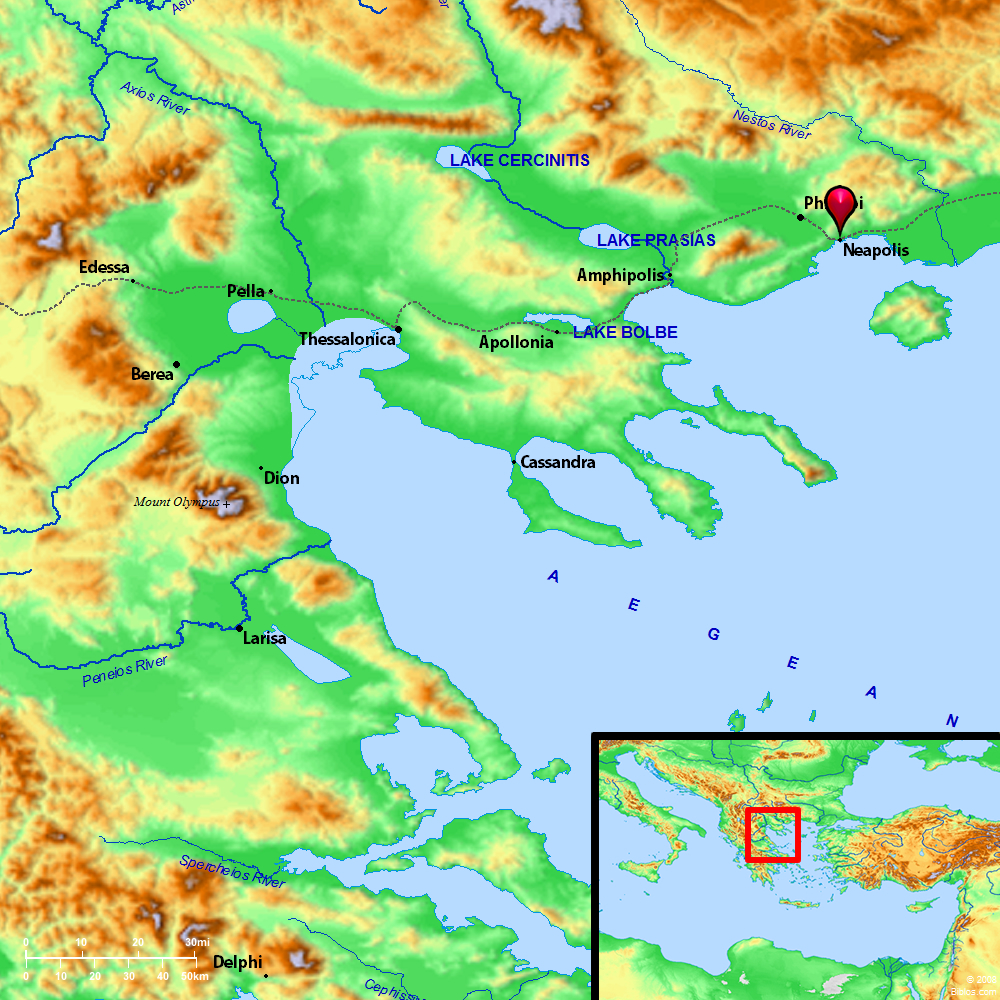Atlas  Neapolis and surrounding region Maps Created using Biblemapper 3.0 Additional data from OpenBible.info You are free to use up to 50 Biblos coprighted maps (small or large) for your website or presentation. Please credit Biblos.com. Occurrences Acts 16:11 Setting sail therefore from Troas, we made a straight course to Samothrace, and the day following to Neapolis;Encyclopedia NEAPOLISne-ap'-o-lis (Neapolis; Westcott and Hort, The New Testament in Greek, Nea Polis): A town on the northern shore the Aegean, originally belonging to Thrace but later falling within the Roman province of Macedonia. It was the seaport of Philippi, and was the first point in Europe at which Paul and his companions landed; from Troas they had sailed direct to Samothrace, and on the next day reached Neapolis (Acts 16:11). Paul probably passed through the town again on his second visit to Macedonia (Acts 20:1), and he certainly must have embarked there on his last journey from Philippi to Troas, which occupied 5 days (Acts 20:6). The position of Neapolis is a matter of dispute. Some writers have maintained that it lay on the site known as Eski (i.e. "Old") Kavalla (Cousinery, Macedoine, II, 109;), and that upon its destruction in the 6th or 7th century A.D. the inhabitants migrated to the place, about 10 miles to the East, called Christopolis in medieval and Kavalla in modern times. But the general view, and that which is most consonant with the evidence, both literary and archaeological, places Neapolis at Kavalla, which lies on a rocky headland with a spacious harbor on its western side, in which the fleet of Brutus and Cassius was moored at the time of the battle of Philippi (42 B.C.; Appian Bell. Civ. iv.106). The town lay some 10 Roman miles from Philippi, with which it was connected by a road leading over the mountain ridge named Symbolum, which separates the plain of Philippi from the sea. Strong's Greek G3496: Nea PolisNeapolis, a city of Macedonia |



